|
|
The Blakely Burl Tree Project: The
Story
|
The Blakely Burl Tree Project:
From The Ground Up
by Terry Martin |
DIGGING DEEP
It's early Tuesday morning, and the
team gathers by the tree. Silhouetted by the rising sun, the massive trunk of
the tree looks strangely imposing now that it has been shorn of its foliage and
branches.
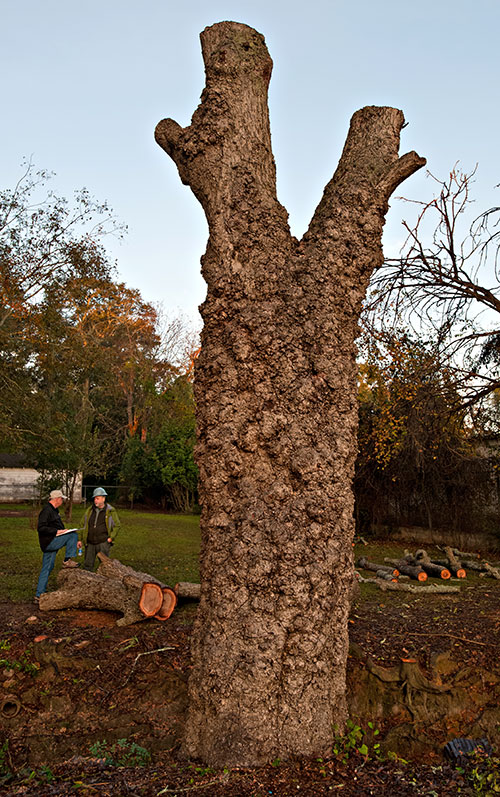
Terry Martin (left) and Mark Lindquist with limbed tree
Photo: John McFadden
Its lumpy, gnarled surface gives an impression of extra weight. The
trunk now resembles a large letter “Y”, with an elongated lower part and two
short arms where the major limbs were cut.
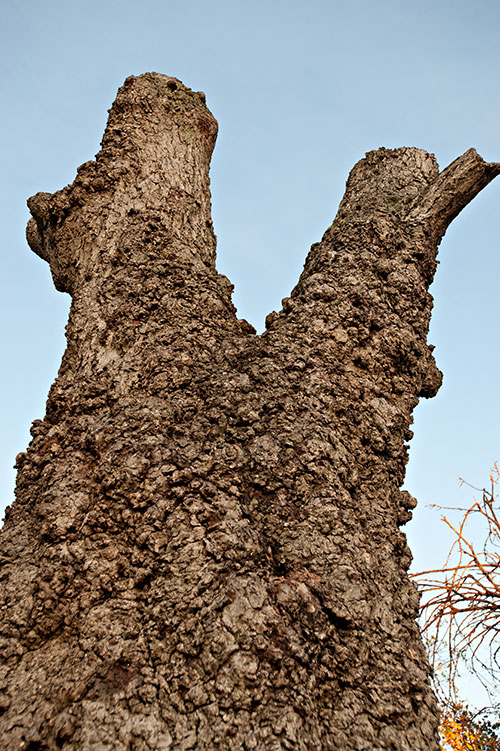
The main fork Photo: John McFadden
The impression of weight is enhanced
by the fact that it is very solidly embedded in the bank of the Big Ditch.
Somehow, the crew has to lift that whole trunk out of the ground with as much of
the root system intact as possible.
It’s time for creative and careful use of the digging machines.
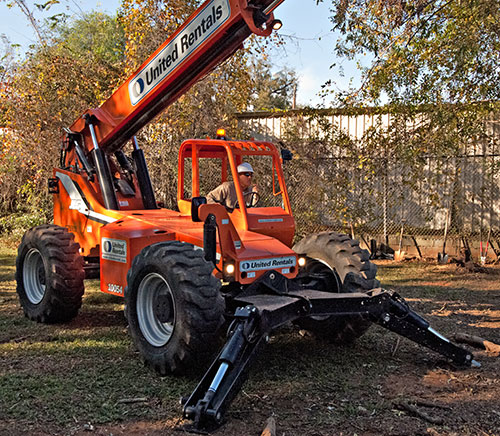
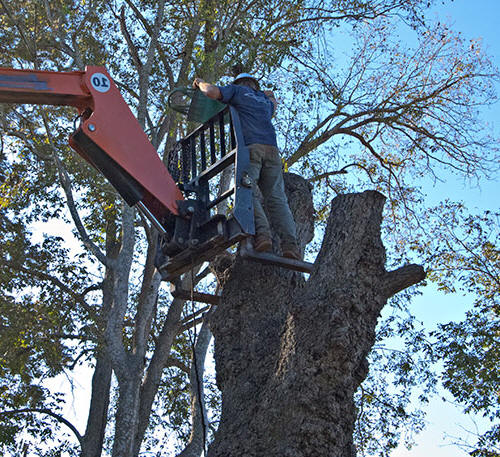
Jim Carver positions telehandler (left) while Gary Stevens secures the tree
(right)
Photos:
Mark Lindquist
The telehandler is
attached to the top of the trunk with a chain to prevent unexpected movement,
then the contractors start carefully scraping away the topsoil and the
accumulated trash of decades. Bricks, lumps of metal and concrete all are lifted
into the dump truck. I imagine the people who threw these unwanted things away
thinking, “Nobody’ll ever notice this back there behind the store. I mean,
nobody ever goes there….”
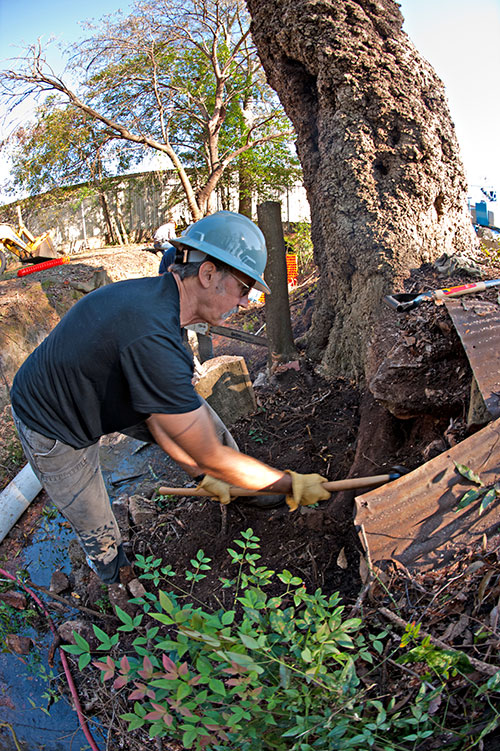
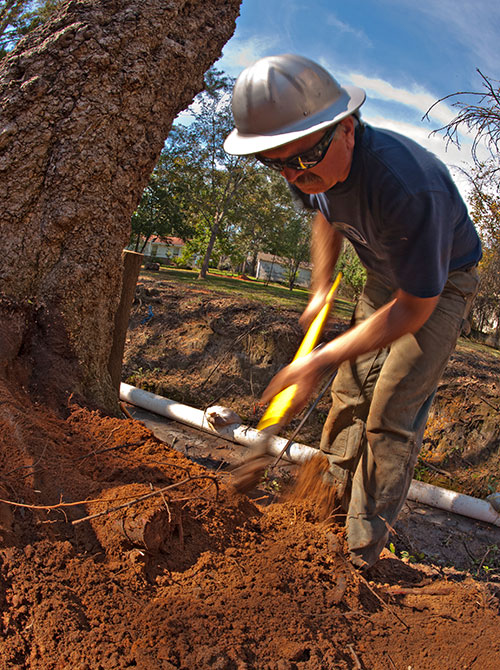
Chris Smith Left) and Gary Stevens (right) digging amongst the debris getting
at the roots Photos: John
McFadden
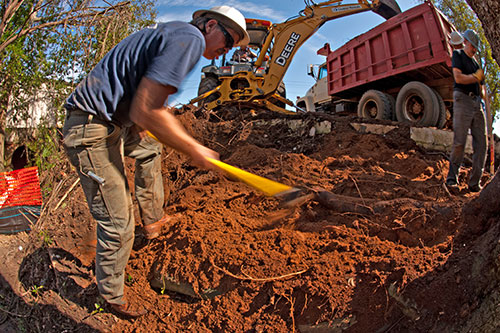
Gary Stevens excavating around the roots.
Photo: John McFadden
With Mark supervising, Chris and Gary are busy with the local crew, working
their way towards the roots with shovels and pickaxes, occasionally stepping
back for the digger to scrape dirt away from what they have exposed.
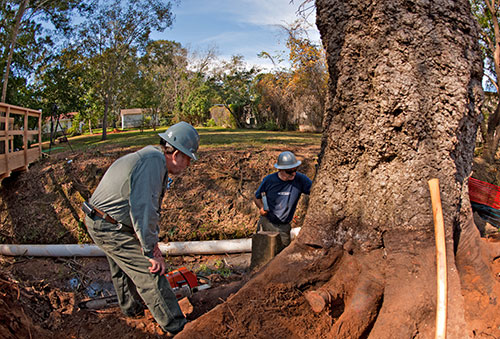
Mark Lindquist (left) and Gary Stevens with Blakely Burl Tree
Photo: John McFadden
They want
to expose as much as possible before they call on the enormous crane that has
arrived. Gary repeatedly climbs down right beside the heavy swinging digger,
delicately guiding every scrape of dirt and once more I marvel at his rapport
with the operators.
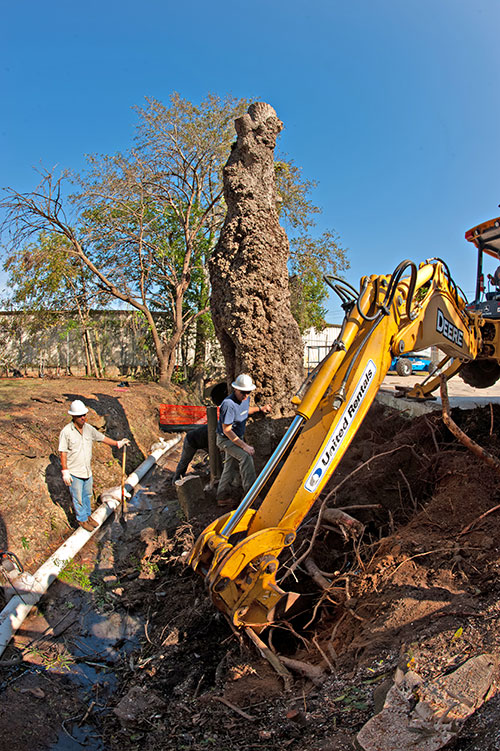
Gary Stevens (center) working with equipment operator carefully excavating
around tree roots Photo: John
McFadden
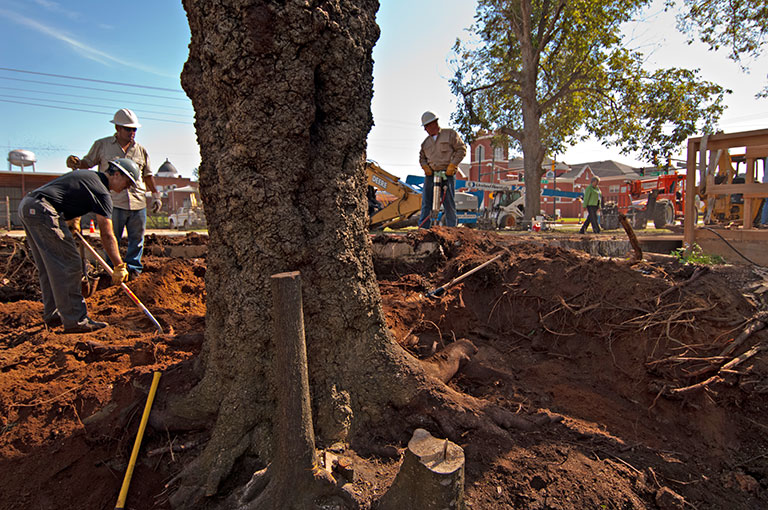
Jim Carver (center) runs a jack hammer to break up concrete pad above roots.
Photo:
Mark Lindquist
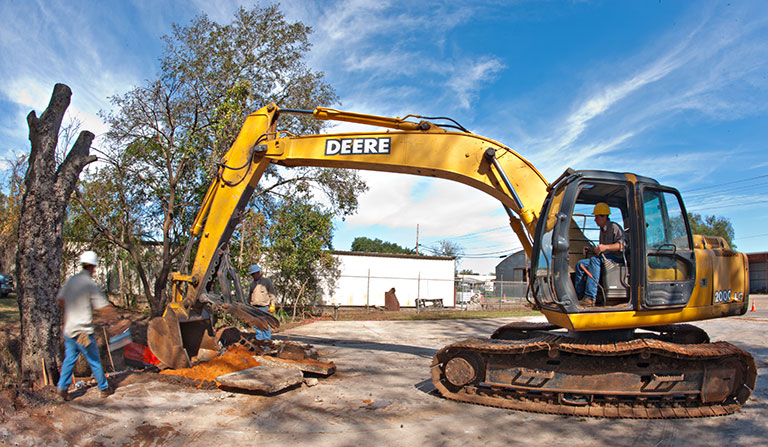
Jim Carver (center) and his crew, excavating the front side of the blakely
Burl Tree
Photo: John McFadden
I talk with Jim Carver, the contractor for much of the work, about our day at
the Kolomoki mounds and I mention Charles and the Indian arrowheads he
collected. Jim tells me that Greg Baxley, one of his workers, has an enormous
collection. “He’s got a nose for ‘em,” said Jim. When I am introduced to Greg,
he happily invites me to see his collection. It’s another new experience to look
forward to.
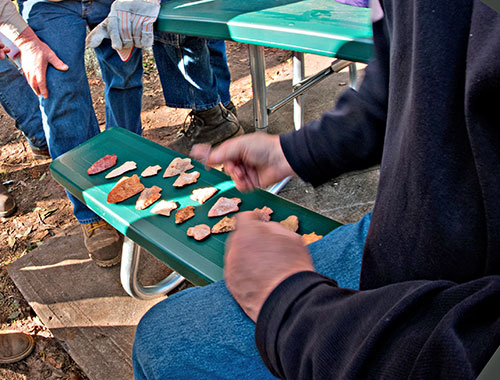
Arrowheads from Early County, GA
Photo: John McFadden
The hole deepens and the root ball is increasingly exposed. The major roots are
widely spread and decisions have to be made about where to start cutting these
roots to free the tree from the soil. It’s painfully slow work and by late
afternoon Mark calls a halt because the tree has to be left standing overnight
and any more soil removal will make it unsafe.
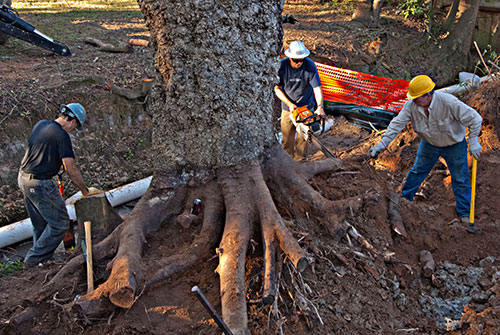
Gary Stevens (center) cuts roots in preparation for hoisting of the Blakely
Burl Tree
Photo:
Mark Lindquist
As evening approaches the tree
stands ready for the next day's work, the lifting of the tree. A barrier is
erected around the now-enormous hole and the site is left in the care of the
Sheriff’s Department.
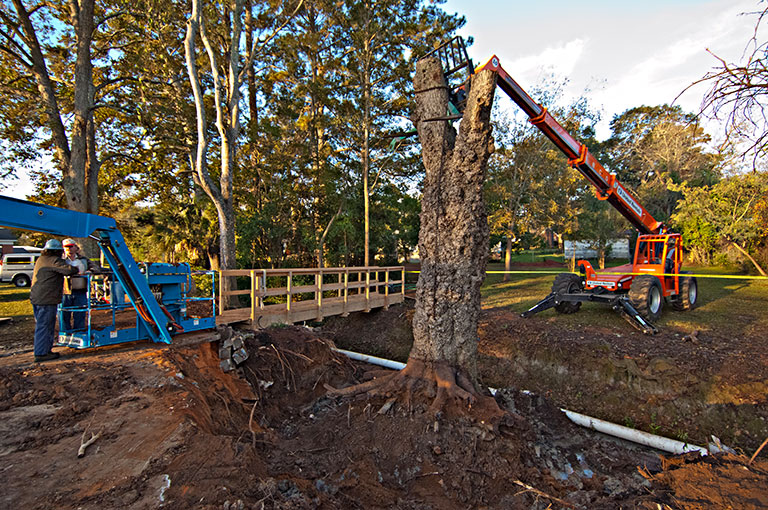
End of day, tree is secured with telehandler.
Photo:
Mark Lindquist
Word appears to have spread that burl trees might be valuable and we hear that
there is an oak burl tree on a farm not far out of town. In cool evening light
we drive out to inspect the tree. At first glance it is a fine specimen, even
bigger than the Blakely tree. Mark and Gary sound the tree with a large metal
bar, resoundingly thumping the sides, but instead of a solid ‘thunk’, there is a
flabby-sounding ‘spludge’. The tree is hollow and largely rotten, but we are not
surprised as trees like this often let in water, then rot from the inside out.
We stand back, disappointed. It’s a shame nobody found this tree before it
started to rot. The unspoken fear is that the next few days will reveal the
Blakely tree is also rotten inside.
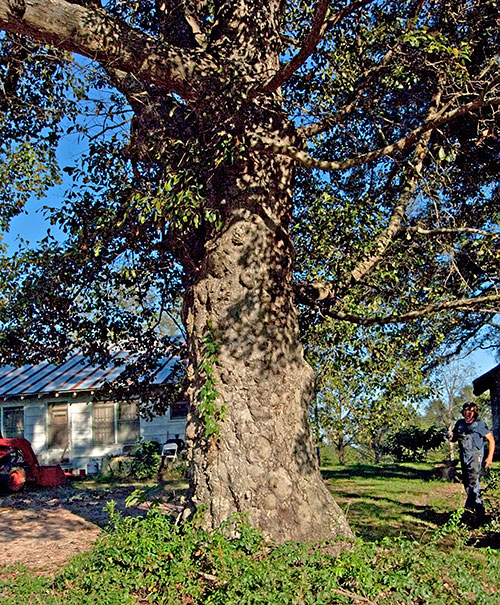
Another burl tree in Early County, unfortunately rotten on inside.
Photo:
Mark Lindquist
|
|